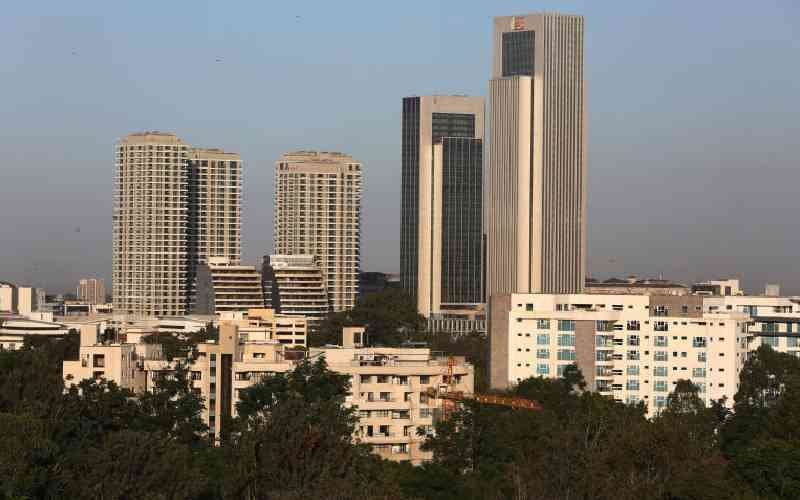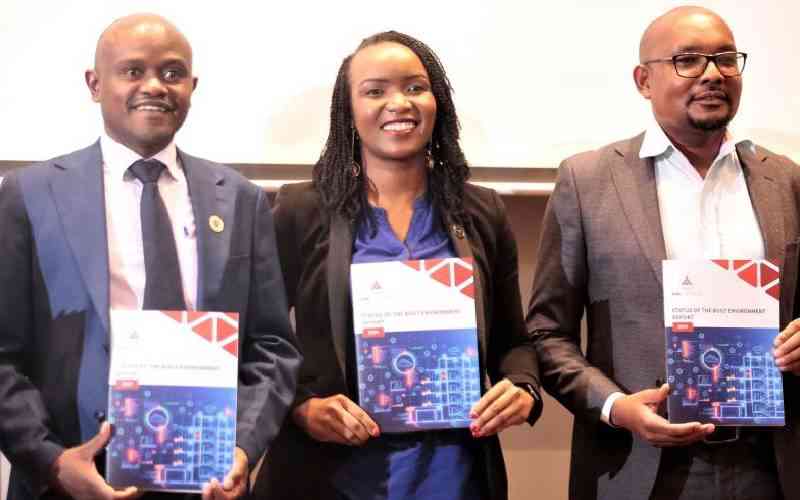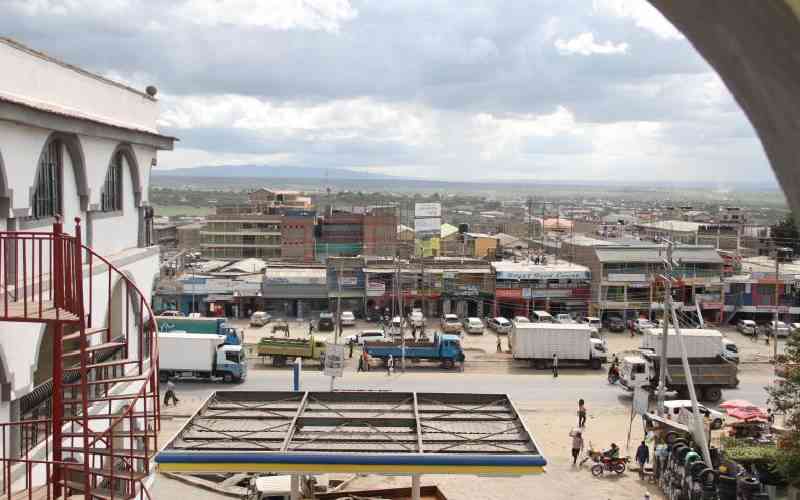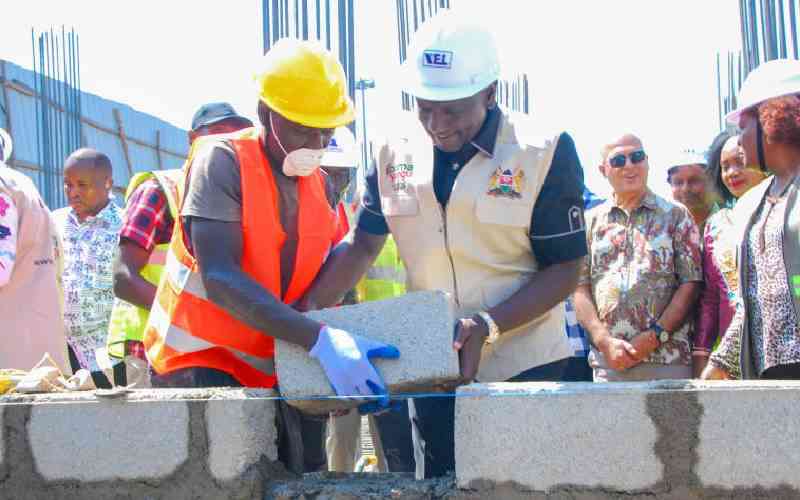It’s midday and the main road passing through Kitengela town is jammed with vehicles going in and out of this small town.
But it is not just vehicles that jam Kitengela; the town and its environs are bustling with developments, with experts warning this is a recipe for disaster.

Kitengela is one of Nairobi’s satellite towns whose growth is linked to an expanding middle-class looking for affordable housing. This group has pushed up the demand for housing in such towns.
Mairura Omwenga, the chairman of Town and County Planners Association of Kenya (TCPAK), explains that growth in such areas is demand-driven and that the high property prices in Nairobi have forced many to seek affordable houses on the outskirts.
Omwenga says that urban sprawl being witnessed in Ongata Rongai, Ruai, Syokimau, Ngong, Kiambu, Ruiru, Isinya and Kiserian is a disaster in the making as there is no planning to support that growth.
He argues that many of the developments neighbouring Nairobi are sporadic and pose serious urban planning challenges in both the city and the satellite towns.
No clear plan
Just like Nairobi, which experts say has grown and developed without a clear plan for more than 66 years, the emerging satellite towns lack comprehensive master plans.
In 2012, Kajiado County Council put a blanket suspension on the sub-division of land in its key urban centres in a move to control the upsurge of unplanned developments.
The council argued that the increased development of the area was causing a planning nightmare in the county as developers were leaving inadequate space for the development of basic infrastructure.
Collins Kowuor, a former chairman of the Institution of Surveyors of Kenya (ISK), says that social amenities in some of these areas are greatly stretched and prompt planning is necessary.
Kowuor, however, opposes the move to suspend sale of land or to increase the minimum allowable sub-division of land, noting that such moves would not only open the door to black market property sales but also lead to loss in revenue for the Government. “Such moves could see an upsurge in land deals,” he notes.
Omwenga, on the other hand, welcomes such directives, arguing that tough decisions, however belated, need to be made. “The current minimum allowable sub-division of land is unsustainable and must be contained. We have subdivided land into such small plots that no meaningful development can be done on it,” he says.
“Uncontrolled, unplanned growth, development and the urban sprawl in rich agricultural hinterlands, such as parts of Kiambu, should be contained.”
Other areas that experts say lack proper planning include Ruai, some of estates on the Thika Superhighway and Ruiru. They say some developments on Thika Superhighway, such as shopping malls and gated estates, are not well planned, leading to traffic congestion.
Lack of sufficient resources from the county government to fast-track city planning and lack of professional staff are cited as some of the major hindrances in planning for the satellite towns.
“As Kenya’s main city, Nairobi has attracted many people and experienced rapid growth and spatial expansion,” Omwenga says.
Double-edged sword
Kajiado County Director of Economic Planning Jonathan Turere tells Home & Away that the mushrooming of developments within the county is a double-edged sword.
He says the county government is yet to benefit from land rates because they lack a valuation roll.
“Managing land in the county is a major challenge as the county government and the defunct local authorities never anticipated growth of this magnitude,” he said.
He adds: “The challenges we are facing in parts of Kitengela are just but a spillover effect of urban-planning problems currently being witnessed in Nairobi.” Turere, however, noted that all is not lost as the county government develops a County Spatial Plan annually, as well as constitutional, five-year County Integrated Development Plans.
Poor planning, however, is not confined to satellite towns but even areas within Nairobi, areas like Eastleigh that have grown rapidly.
Hussein Haji, chairman of the Eastleigh Community Association, argues that many of the properties developed in Eastleigh are not connected to a sewerage system, and those that are connected suffer from clogged pipes.
He blames the Nairobi County government for doing little to address the problem, which he calls perennial.
“During the night, many residents discharge waste water onto the streets, especially in Eastleigh’s section five,” he said.
Nairobi County Executive for Environment Evans Ondieki affirms that they have arrested scrupulous developers in Karen, Riara, Kileleshwa, Eastleigh and parts of Mathere who were caught discharging septic tank effluent onto the roads and into rivers.
Criminal acts
“Such criminal acts are often perpetrated by developers who choose not to connect their developments, mostly illegal, to the main sewerage connections in the city,” Ondieki says.
Ondieki terms the issue immoral: “When one discharges sewage into rivers, it poses a major health risk to not only residents of Nairobi but also our neighbouring counties of Machakos and Kiambu, who also source their water from these sources.”
He, however, notes that all is not lost as Nairobi is moving in the right direction; recovering from the mess instigated by the former local authorities, which he claims were compromised by impunity and corruption.
“Planning is the heart and soul of any modernisation and Nairobi as a SMART city is implementing the Nairobi Integrated Urban Development Master Plan (Niuplan), which defines development areas within the city.”
“Seventy per cent of city residents receive water for more than three days a week; with reliable water connections we have realised improved use of sewerage systems,” he says. “High density areas such as Zimmerman Estate, Kayole and Dagoretti are currently connected to a reliable sewerage system.”
 The Standard Group Plc is a multi-media organization with investments in media platforms spanning newspaper print
operations, television, radio broadcasting, digital and online services. The Standard Group is recognized as a
leading multi-media house in Kenya with a key influence in matters of national and international interest.
The Standard Group Plc is a multi-media organization with investments in media platforms spanning newspaper print
operations, television, radio broadcasting, digital and online services. The Standard Group is recognized as a
leading multi-media house in Kenya with a key influence in matters of national and international interest.











